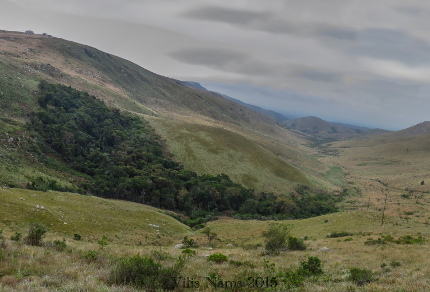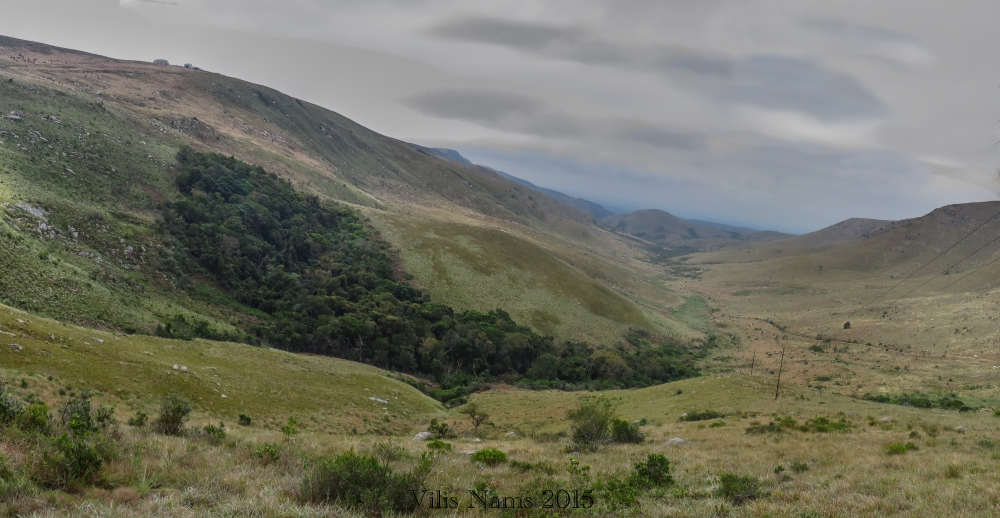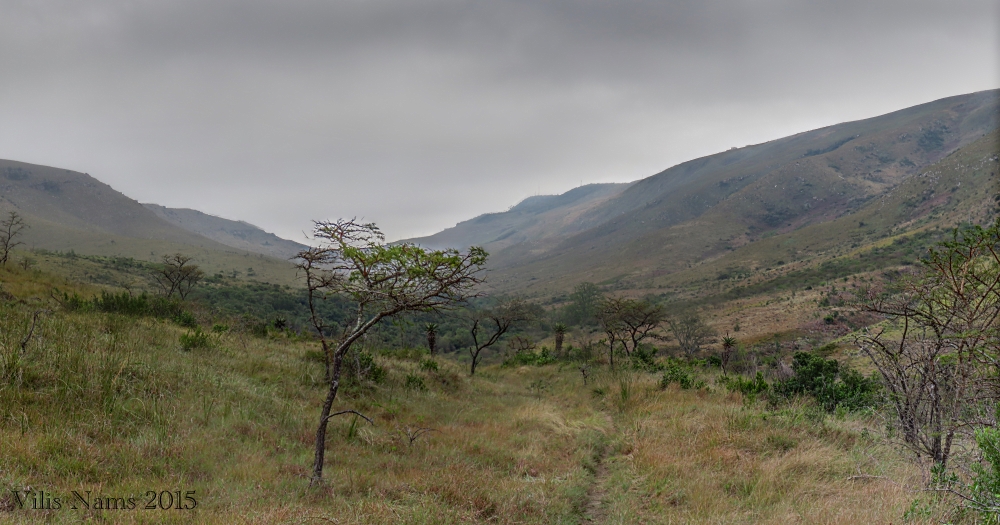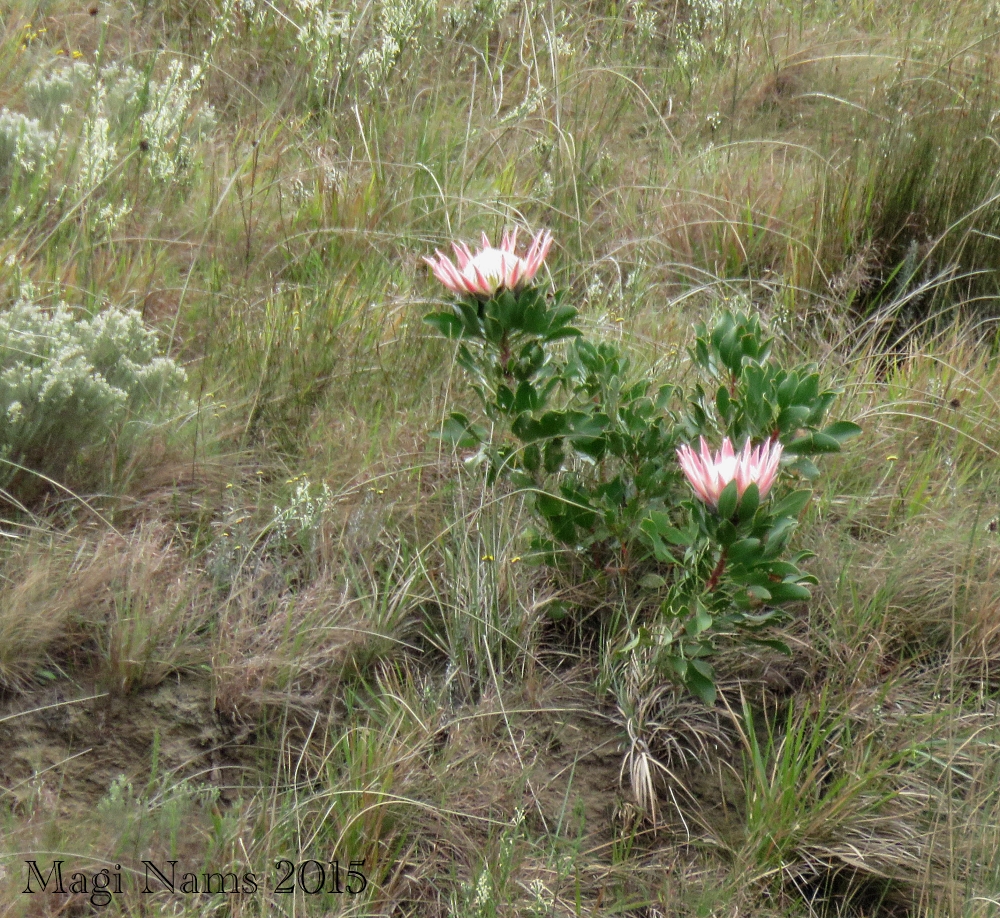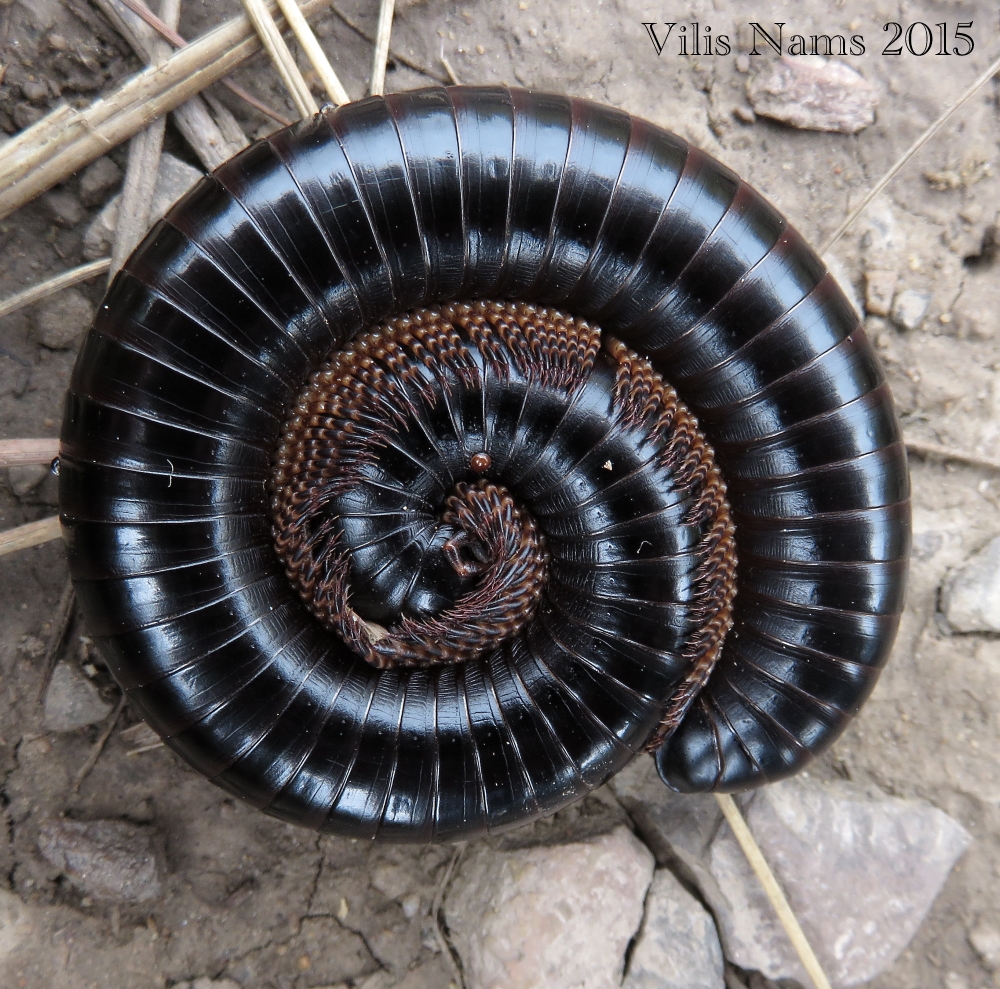Hiking Featherstone Kloof near Grahamstown offered scenic views of fynbos-covered hills, riverine forest packed with songbirds and sightings of quintessentially South African Cape sugarbird and blooming proteas.
On August 29, Vilis and I hiked a 16-kilometre loop from our apartment on the Rhodes University campus in Grahamstown through Featherstone Kloof, a long, steep-sided valley just over the high ridge of the Rietberge south of 1820 Settlers National Monument on Gunfire Hill. Foot travel is a much more common mode of travel here in South Africa than in Canada, so it seemed perfectly natural to embark on an all-day hike. Besides, we don’t own a car here and didn’t want to rent one simply to transport us to the Featherstone Kloof trailhead on Mountain Drive.
In the early Saturday morning, we headed southeast through Grahamstown’s quiet streets. The day was overcast, with a cool south wind. We strode up Gunfire Hill, and I spotted a pair of crowned lapwings near the statue commemorating the arrival of English settlers in 1820. We crossed the N2 (major highway between Port Elizabeth and East London) and climbed the steep ridge of the southern commonage (formerly grazing land) to Mountain Drive. In the grassland, I spotted a neddicky, brimstone canary, female African stonechat and helmeted guineafowl. (Tap on photos to enlarge.)
Past Mountain View Manor on Mountain Drive, we followed a track down the steep ridge and into Featherstone Kloof. An enticing copse of riverine woodland lured us from the trail. It was filled with the music of songbirds. An exquisite greater double-collared sunbird flitted among the trees. A tiny, perky green-backed camaroptera, the first I’d seen, carried a fluff of nesting material in its beak and came to us when I played a recorded green-backed camaroptera call, using the Sasol eBirds of Southern Africa app on my cell phone. What a treat!
After leaving the pocket of forest, we hiked west within Featherstone Kloof. A Cape grassbird with a rusty cap and long, rusty tail skulked in rank vegetation growing along a drainage line. A Cape sugarbird with an even longer tail flew from one stand of shrubs to another, as did an exquisite male malachite sunbird, its metallic green plumage like an emerald. The growling voice of a Kynsna turaco resounded through the kloof. Joy swept through me. This is what I had come to Africa to do: explore the natural world!
Male swee waxbills – tiny seed-eating songbirds with black face masks and bright red rumps – flew from perch to perch in a copse of shrubs edging the trail. Proteas – woody flowering shrubs with pink, spiky bracts surrounding large composite flowers – grew among the fynbos grasses and wildflowers. Fynbos is a distinctive plant biome characterized by a high diversity of species and is found only at the southern tip of Africa.
What goes down must come up, and our ascent out of the west end of Featherstone Kloof was a steep, sweaty one back up to Mountain Drive. We paused frequently to take in scenic views of fynbos-covered hills and short views of birds and a giant millipede that curled into a tight spiral when touched. From Mountain Drive, the hike was all downhill back to our apartment. All in all, an excellent, spirit-lifting outing, and I added four new South African birds to my life list!
My Featherstone Kloof hike bird sightings: Hadeda ibis, red-winged starling, red-eyed dove, fork-tailed drongo, speckled pigeon, olive thrush, African hoopoe, crowned lapwing, neddicky, African stonechat, brimstone canary, helmeted guineafowl, *green-backed camaroptera, greater double-collared sunbird, *Cape grassbird, *Cape sugarbird, malachite sunbird, Knysna turaco, *Swee waxbill, southern tchagra, amethyst sunbird, common fiscal, Cape rock-thrush.

